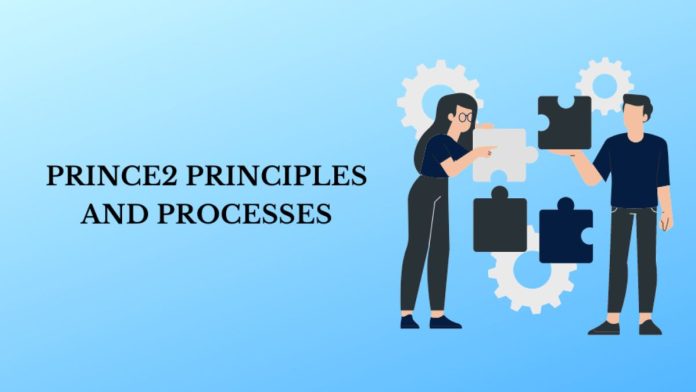PRINCE2 training is a widely recognised project management approach that serves as a best practice guide for companies in both the public and commercial sectors. The UK government created the framework, which is still widely used by them to help with successful project management. Its use has extended to private-sector enterprises all around the world. It is a framework that unifies the PRINCE2 Project Stages, principles, themes, and the project environment. They handle the six areas of project performance – time, money, quality, risk, scope, and benefits – through planning, delegation, management, and control.
The 7 Prince2 Principles
A guide that takes responsibility for adhering to excellent practices that determine if the project is genuinely managed by applying PRINCE2. PRINCE2 is a flexible approach that comprises seven principles and completes a project when all of them are used and suited to the nature and size of the project.
The PRINCE2 principles are developed in such a way that they contribute to the success of a project without engaging it in any problem along with the management. The subjects, techniques, and product descriptions complete the project.
1) Continued business justification
This shows a valid reason for starting the project; while it may develop, it should remain valid throughout its existence.
For example, in an AXELOS case study on ‘Using ITIL and PRINCE2 Together,’ a firm wanted to establish an off-shore service desk to supplement its current one at a low cost to assure higher capacity ahead of an IT product delivery. Other perceived benefits emerged along the way, such as enhanced disaster recovery coverage for business continuity; however, they would come at an additional expense and require extra time to set up. The project manager and board decided to stick to the central business case justification and did not approve additional spending. The cost of missing the deadline was assessed as more significant than later-stage disaster recovery.
2) Learn from the experience
Lessons from the past should be applied to ongoing projects. Lessons learned from ongoing initiatives should be documented for future reference. Companies frequently choose project managers based on their previous expertise with similar projects.
3) Defined roles and responsibilities
The duties and responsibilities of the various levels of the project team must be established to serve the interests of significant stakeholders.
Some frequent positions allocated in a project include project manager, project sponsor, project board, project team members, project administrator, and so on.
4) Manage by stages
According to PRINCE2 best practice guidelines, a project should be divided into at least two stages for better administration and control. The number of phases should be planned with risk and expense in mind.
5) Manage by exception
This principle implies that projects should be managed by exception. The project team must have an exceptional strategy to ensure that the project is on the proper track, and any modifications must promptly be communicated to the reporting manager.
6) Focus on the product
This principle ensures the product’s quality. The product’s quality should be maintained by focusing on adequately developing products and services and sustaining quality standards throughout all projects and products.
7) Tailor to suit
The final PRINCE2 principle stresses the flexibility of the PRINCE2 framework and its modification to different situations and projects. Every project has its unique set of difficulties and requirements, and PRINCE2 can provide the freedom to shape the appropriate principles.
The Prince2 Project Stages
The Prince2 Project Stages guide a project from beginning to end. After reviewing the Principles and Themes, you can use the Processes to travel around the project and explore each step easily.
1) Start the project
Start a project, develop a project mandate that answers strategic inquiries concerning the project and clarifies the motivation behind the project. A project brief is provided from the expertise, training log, and discussion with individuals engaged with the project.
2) Initiating a project
Initiating a project is about realising what needs to be done to complete the project. The project manager outlines how to manage time, cost, quality, scope, benefits, and risk.
3) Directing a project
Directing a project is a progressing procedure from the starting point to the finish of a task. The project board oversees activities, for example, initiation stage limits, Ad hoc bearing/direction, and project conclusion.
4) Controlling a stage
Controlling a stage is when the project managers authorise work packages, which break the project down into manageable activities and are assigned to teams and their managers to oversee and report on work package progress.
5) Manage product delivery
Managing product delivery is how well the team manager and the project manager control their communication. MP consists of activities such as accepting a work package, executing a work package, and delivering a work package.
6) Close a project
This method consists of decommissioning the project, identifying follow-on actions, preparing benefits and project evaluation reviews, freeing up extra resources, and handing over products to the customer.
Conclusion
Prince2 methods and principles guarantee that projects are delivered successfully along with high-quality services. With PRINCE2 certification training, you can learn more about the PRINCE2 methodology and master your project management abilities, allowing you to advance your career.


